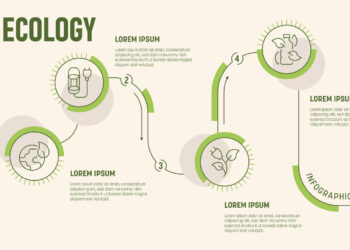
For a variety of reasons, many scholarly publishers are beginning to rethink their consumer-facing Web sites. Let’s be clear that when we talk about “consumer-facing,” we are not thinking about attempting to crack the entertainment market but, rather, this is a reference to marketing directly to individuals, for which the Web is an unsurpassed medium. There are many reasons that consumer-facing Web sites are of growing interest. For one (and this is a key strategic item for many publishers), an overhauled Web site is an essential step in a library bypass strategy, which is bound to be at or near the center of many publishers plans as they contemplate a future of diminished library budgets. For others, whether they are absorbed with library bypass or not, there may be a desire to establish direct sales to end-users for pay-per-view articles or books.
Perhaps an even greater motivation to be thinking about consumer-facing sites is that it feels like the right time. Now even the stodgiest members of a scholarly publisher’s management team (or perhaps the arch conservatives of the copy-editing department) routinely go online for information, read occasional blogs, and may even have a Facebook page. With digital technology having infiltrated so many areas of how we live and work today, it’s not a big leap to say that the Web site for oncologists or classicists can and should do more than announce new conferences and present a table of contents for the current issue of a professional society’s journal. Let’s strike up a conversation with these people who have found their way to our door (with little help from us), offer them a drink, and see how it may be in our interest to engage them in a more fundamental way.
It is not necessarily an academic publisher’s instinct to build a Web site that reaches out to end-users. Academic publishers are highly skilled in developing sophisticated content, but a Web site tends to be sparser, more a conversation-starter than an argument-settler. In their library-facing aspect, publishers know what communication vehicles to use and how to measure them. But in a site that looks out to the open Web, what are the relative metrics? “Hits?” Pageviews? The number of unique users (assuming you can capture this data)? Or is the metric monetary: How many sales have we had this month directly from the site?
In other words, simply building out an organization’s Internet presence doesn’t necessarily lead to anywhere. So, for example, I stumbled on one company that boasted that it had developed a Twitter feed. Tweets go out, the number of followers is growing. Sounds good, but to what purpose? The Tweets are not integrated into any overarching marketing strategy. Some of the Tweets point to the company’s Web site, others to third-party sites. But what happens, or is supposed to happen, when a follower clicks on the links? There is no follow-up action. You might say that the value of this particular Twitter stream is in reinforcing the brand of the sponsoring organization. Maybe so, but when you inquire into the cost of maintaining the feed (who is writing the Tweets, how much time goes into them), you find that there has been no such analysis, nor was there an investigation into how time could be better spent. Here we see one of the seductions of consumer media: it is so easy to use that you can get involved with it without much forethought. Think about this the next time you update a Facebook page when you could be reading that book that you just can’t seem to finish.
When thinking about a consumer-facing Web presence, there are four steps to follow. These are deceptively easy steps, deceptive because they have to be tied to an overarching strategy, and strategy is anything but easy.
- Get a user to your site for the first time. This seems obvious, but it is more work than it looks and it can involve investment, usually in staff time. There are countless ways to get users to the site the first time, from links in Twitter feeds to purchasing ads in print publications, but some of these ways are more effective than others. The program to bring users to the site needs to be analyzed to get at the cost of user acquisition. This is a key metric, as becomes clear when you link it to the estimated revenue to be derived from a user. If your average user is spending $10 with you over his or her lifetime, then having a $20 user-acquisition cost is not sustainable; over time, the Web site could gobble up the entire company. How you invest in user acquisition is entirely a function of what you ultimately do with those users, which is where strategy comes in.
- Get a user to your site a second time. This also seems obvious, but it is often overlooked. Once you have invested in getting that user to your site the first time, do you want to throw that money away by not getting a return visit? This brings us to the matter of site design, about which there are always arguments. What features of a site get a user to return? How do you know that? Who is studying the user logs to see what works and what doesn’t? It’s not unusual for this activity to be assigned to a junior member of the organization, who may not have the skills to think analytically about user activity. Here is a test question: Does the head of the organization spend more time on matters concerning editorial selection than on the activity of the Web site? Here we have the Editorial Fallacy at work once more, undermining the success of the organization. If the Web site embodies an important strategy, it requires the attention of senior management–and the analytic muscle that only senior management can bring to it. If it does not embody an important strategy, why do you have it?
- Get users to encourage other individuals to come to the site. This is the world of viral marketing, which is closely connected to step #1. The virtue of viral marketing, when it works, is that it is cheap; it keeps user-acquisition costs down. If a user can be coaxed into bringing new people to the site, that user is now an unpaid member of your marketing department. But viral marketing is not simply something you pray for; it consists of a program of steps taken to encourage users to bring their social graph to your service. Good creative instincts underlie viral marketing, but analysis makes it into a business.
- Have a user perform an action on the site. What do you want users to do when they get there? This can range from encouraging them to get other users to come to the site (step #3–but not an end in itself) to having them make a purchase. And there is a lot of space in between. For example, you may wish to know more about your users (the better to get them to return to the site in the future), so you may develop mechanisms to coax them to provide personal information (“Sign up now for the white paper on government policy and genetic research, and it will be sent to you as soon as it is available”). The actions a user takes on the site ultimately must support the reason the site was built in the first place (increased sales, increased article usage, which can lead to increased sales, etc.).
The larger question — Why do you want to build a more robust Web presence in the first place? — can only be answered by individual organizations, and no two answers can be the same unless the organizations are the same. But now we are in the area of strategy, and that’s the subject of many another post.
Discussion
4 Thoughts on "The Four-step Program to an Academic Web Site"
Great stuff, Joe. Getting people to even think about their users is a challenge. The problem is that publishers know a great deal about their product and very little about their users. So they think about what they know. They should be studying their user’s’ workflow, to see where using their website might fit in.
Regarding which, one of the hardest things to do is get people to help users leave their website. But this leaving is not a loss, rather it is a service. It turns your site into a portal, which brings people in. Then you show them stuff as they pass through.
For example, I am doing a project with the following flow. I am finding potential reviewers, building pools of them for various specialized topics. Here is the procedure I follow, over and over: I start with Google Scholar, to find the article I want. GS takes me to the publisher, where I find the author I want. I then need to go to the author’s website. But I have yet to find a publisher that includes the author’s website URL. They will have the author’s mailing address, sometimes the email address, maybe even the phone number, but not the URL. So I go to Google and wade through that to try to find the website.
The nature of academic institution purchasing adds in a layer of difficulty in measuring return on investment. For a commercial bookseller, you get the customer to your site, they pull out a credit card and make a purchase. You track where they came from, and have an idea of the effectiveness of your various campaigns.
But in academic settings, purchasers very often aren’t spending their own money. If a researcher is buying a lab manual with grant funds, it can become a multi-step process involving several people. The user clicks on your Twitter link, goes to your site, sees the book he wants to purchase. Then he tells the person in the lab responsible for lab purchases, and that person goes through the university’s purchasing system and buys the book. Or the university has a discount deal with a particular supplier, and they can buy things at a discount from someone like Sigma-Aldrich, so they buy the book there because it’s easier and cheaper. Your tweet was still valuable and the driving force behind a book sale, but there’s no direct link between the initial visitor and the actual sale.
Which adds another layer of fuzziness to the interpretation of the value of your activities and investments.
Or the customer comes to your web site because of actions you have taken, but then goes to Amazon to make the purchase if the price there is cheaper or just to save on postage if your order exceeds $25. You are still getting a purchase, but can’t track it back to your promotional activity so readily.
At Penn State the main person overseeing the web site is a senior staff person who heads the marketing department and holds the title of assistant director. But he is not the only senior staff person involved. It is a multi-departmental, high-priority responsibility. Some of the effective strategies used to attract people to the web site and keep them coming back are Google AdWords, e-mail signups for announcing new books in areas of the customer’s interest, and special discount offers available only online. Yes, editorial reputation alone is not enough to drive sales through a web site (or otherwise), but it is still a very necessary component. If your press is in the top five in a certain field–as Penn State is in art history, for example–scholars in that field will have more reason to visit the site more often and to sign up for announcements of new titles, see if new discounts are being offered, etc.



